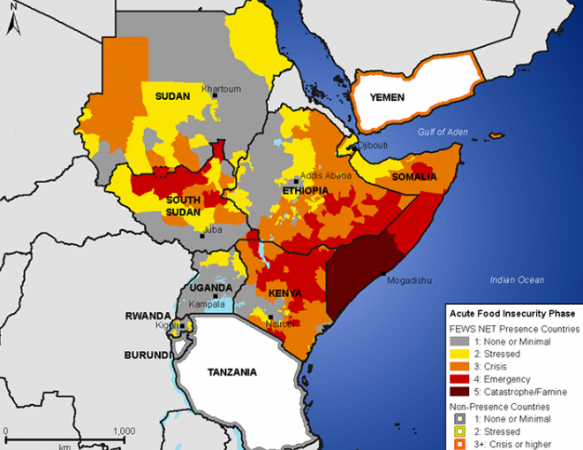
Kenya: According to a global team of climate scientists, human-caused climate change has made the ongoing drought in Eastern Africa worse and increased the likelihood that it will start in the first place.
The World Weather Attribution organisation, which aims to quickly determine whether specific extreme weather events were influenced by climate change, released the report on Thursday. Nineteen scientists from seven different countries evaluated how the region's rainfall was impacted by climate change.
According to Joyce Kimutai, chief meteorologist at the Kenya Meteorological Department, "Climate change is to blame for the low rainfall in the area. Because of climate change, the drought is exceptional.
Also Read: Taliban women's bans must be "swiftly reversed," according to the UN Security Council
The researchers looked at historical weather information, including variations in the two main rainfall patterns in the area as well as simulations from computer models that date back to the 1800s. They discovered that due to climate change, the short rains season—typically October through December—was becoming wetter and the long rains season—March through May—was becoming drier. According to the report, the drought's severity had been exacerbated by a "strong increase" in evaporation from plants and soil brought on by higher temperatures.
They described the region's drought as "one of a kind."
The study's principal investigator, senior climate scientist at Imperial College London Friederike Otto, noted that it demonstrated how the effects of climate change "strongly depend on how vulnerable we are."
Although climate change has increased the frequency and severity of drought in the Horn region, the scientists acknowledged that other factors, such as previous poor rainy seasons, high temperatures, conflict, shaky statehood, and poverty, are also to blame for the "devastating impacts."
Also Read: Former US Vice President Mike Pence testifies before a grand jury investigating the 2016 election
According to the UN, the drought has affected more than 20 million people in Kenya, Ethiopia, Somalia, Uganda, and South Sudan, with more than 2.2 million people being displaced in Somalia and Ethiopia and hundreds of thousands of pregnant or nursing women facing serious maternal risks.
Almost 15 million children are at risk of acute malnutrition, according to Rod Beadle, director of relief and humanitarian affairs at Food for the Hungry.
"North Kenya is in a dire situation despite the recent rains due to the pressure from previous failed seasons. Many pastoralists lost their main sources of income as a result of the flooding, which also affected livestock.
Because of the drought, the soil has become extremely compacted and is unable to absorb water, making floods more severe. As more refugees arrive, the nation is also dealing with serious cholera outbreaks and other diseases, Beadle said.
According to Guyo Malicha Roba, the director of the Jameel Observatory, which studies issues related to food insecurity in dryland countries, development gains in the countries have been offset by a long history of calamities such as famine, disease, and natural disasters.
Also Read: Kyiv explosions and air raid sirens throughout Ukraine
Roba claimed that while efforts to improve the food situation in the drylands of the region have been made through fundraising efforts and food distributions from governments and humanitarian partners, more needs to be done to make use of early-warning systems to react more quickly to "food shocks."